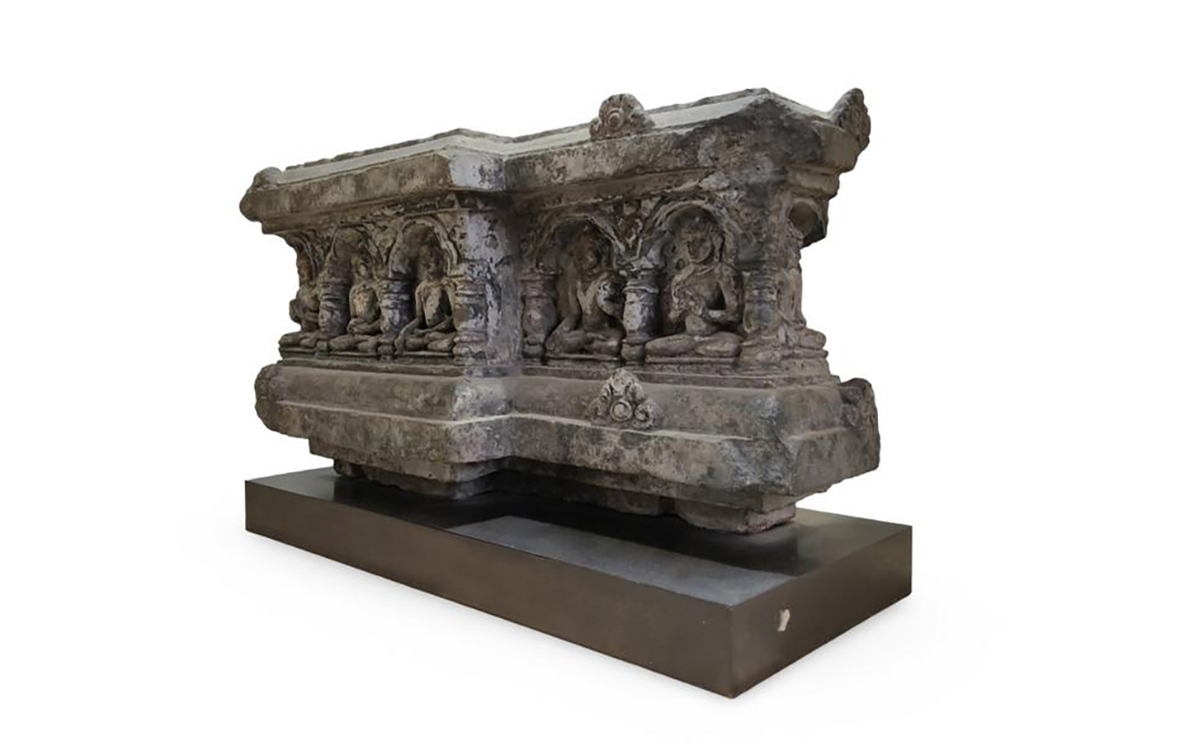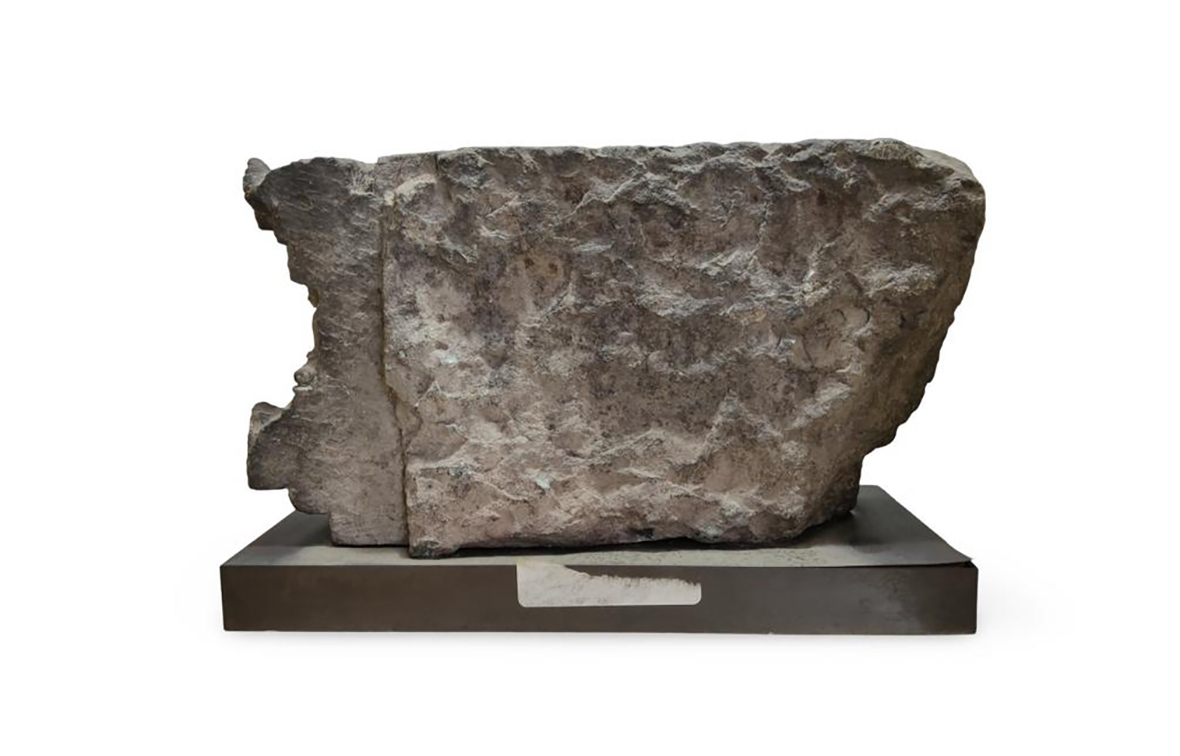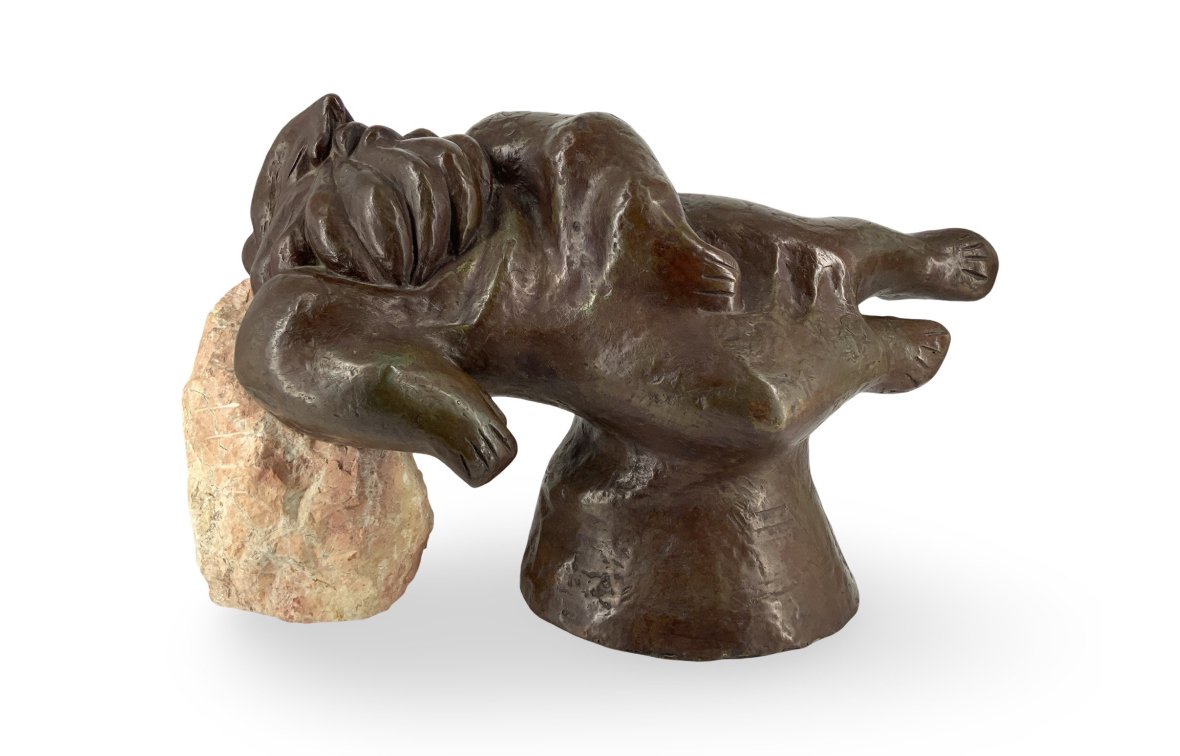
The Gandharan Grey Schist
The Gandharan Grey Schist Frieze Fragment: A Testament to Cultural Survival
A Gandharan grey schist Buddha frieze fragment carved in deep relief with six seated Buddhas each in a different mudra pose. is set to come up for auction on Saturday, 9th November with Auction House Algarve.
This artefact, dating from the 2nd or 3rd century CE, is a unique example of the intricate artistry of the Gandhara civilisation, a region renowned for its fusion of Greco-Roman, Persian, and Indian cultural influences. Beyond its aesthetic value, this frieze fragment bears witness to significant historical moments that have shaped the region and its cultural heritage.
The Artistic and Cultural Context of Gandhara
Gandhara, located in present-day northern Pakistan and eastern Afghanistan, was a cultural crossroads during the height of the Kushan Empire (1st–3rd centuries CE), facilitating the exchange of ideas and art along the Silk Road. The art of Gandhara is distinguished by its blend of Hellenistic realism and Buddhist iconography. In this frieze fragment, there are six seated Buddhas each in a different mudra pose, within cusped pillared arches. Possibly referencing Jataka tales or local legends that portray the Buddha as a protector or guide.
The frieze symbolises not only the spiritual reverence of the time but also the artistic synthesis that Gandharan culture is known for.


Historical Milestones: A Journey Through Time
This particular fragment has endured centuries of historical upheavals, surviving several significant events:
- The Decline of Buddhism in Gandhara (5th–7th Century CE)
Following the Kushan Empire’s fall, Buddhism began to decline in Gandhara as Hinduism and later Islam gained prominence. Many Buddhist monasteries were abandoned or repurposed, and art from this era was often neglected or lost. The fact that this frieze fragment survived during this period of religious transformation is a testament to its resilience. - The White Huns Invasion (6th Century CE)
The 6th-century invasion by the White Huns (Hephthalites) caused widespread destruction in the region, including many Buddhist sites. Though many sculptures were defaced or destroyed, some, like this grey schist frieze, were hidden or buried, allowing them to survive the violence of the time. - The Spread of Islam and Arab Conquests (8th Century CE Onwards)
With the spread of Islam in the region by the 8th century CE, the religious and cultural landscape shifted once again. As Islamic rulers established control over Gandhara, many Buddhist artifacts were defaced, repurposed, or destroyed. The survival of this particular piece amidst such changes highlights the enduring significance of Buddhist art. - British Colonialism and Archaeological Rediscovery (19th Century CE)
The Gandharan art revival in the 19th century, spurred by British colonial excavations, unearthed countless treasures, including this frieze fragment. Many of these artefacts were acquired by European collectors or museums, safeguarding them from further damage. However, this movement also removed many pieces from their original context, underscoring the tension between preservation and historical continuity. - The Wars in Afghanistan and Pakistan (Late 20th and Early 21st Century)
In more recent decades, the region has been marked by conflict, including the Soviet invasion of Afghanistan, the rise of the Taliban, and ongoing instability in Pakistan. Cultural heritage sites and artefacts have often been targets of looting and destruction, most famously with the Taliban’s demolition of the Bamiyan Buddhas in 2001. Yet, despite such threats, this frieze has survived, a rare relic of Gandhara’s Buddhist past.
Auction and Legacy
As this rare Gandharan grey schist frieze fragment comes up for auction on Saturday, 9th November with Auction House Algarve, it presents a unique opportunity for collectors and historians alike to own a piece of history. The survival of this artefact across millennia of conflict and cultural shifts underscores the resilience of art and its capacity to bridge different historical epochs.
This frieze serves not only as a reminder of Gandhara’s syncretic artistic heritage but also of the importance of preserving such cultural treasures for future generations. Its story is one of survival, cultural exchange, and enduring beauty, offering a glimpse into a world where East and West converged in one of history’s most dynamic regions



